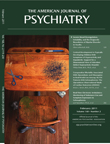In the past 20 years, there has been a sea change in the treatment for addiction, with the emphasis shifting from confrontation toward enhancing motivation for change and building the skills to effect those changes. Carrying out these two aspects of treatment, however, is easier said than done. Enhancing motivation is difficult in part because motivation can be evanescent; being motivated is a state, much like -hunger or satiety, not a trait. A person can be hungry at noon but not be a “hungry person” because eating lunch will make the -person full. Similarly, someone can be “motivated” to stop drinking, pass by a bar, experience a powerful urge to drink, and yield to the urge. Does that make the person “unmotivated?” It's -complicated, yet clinicians often refer to patients' level of -motivation when referring to them, as if it were static.
In their new book entitled Handbook of Motivation and Change: A Practical Guide for Clinicians, Drs. Petros Levounis and Bachaar Arnaout, from Columbia University and Yale University, respectively, have put together a compact and straightforward volume that focuses on increasing the motivation to change in a variety of different patient populations and in different contexts. The editors have gathered together an excellent group of authors to discuss motivational approaches that are appropriate for both different stages of change (precontemplation, contemplation, preparation, action, and maintenance) and different populations (patients with co-occurring psychiatric illness, adolescents, and older adults as well as those who are seen in nonspecialty settings such as primary care physicians' offices).
In most of the chapters, the editors have used a format that effectively facilitates learning. Each chapter includes a clinical case that is illustrative of several major points. This is followed by a discussion of the case. Suggestions are made for treatment, teaching, and supervision, and key clinical points are highlighted in bulleted sections. Multiple-choice questions are included as a way to help readers see how well they understand the material. Each chapter also consists of a vignette from a popular television show or movie that illustrates some of the key clinical principles that have been emphasized. This feature is interesting and sometimes works very well to demonstrate these principles in a manner more colorful than one often sees.
The book offers concrete advice concerning common questions such as, “What should I do in this situation? What should I say now?” The language of motivational enhancement comes alive in this volume.
The authors are also very sophisticated and emphasize that motivation is always subject to change, in either direction. For example, patients who are in the “action” phase of treatment can still be ambivalent and move backward as well as forward toward or away from recovery.
This book is written for the general psychiatrist and does its job well by presenting practical clinical advice in a highly readable and lively manner with clear take-home messages. For the general psychiatrist who sees a lot of patients with substance use disorders (and who doesn't?), this is an excellent introduction to this topic.

